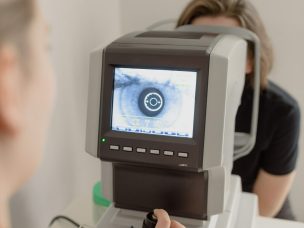Age-related macular degeneration (AMD) is a major cause of legal blindness around the globe. This chronic visual impairment develops with age and is affected by genetic and environmental factors. Some environmental factors that contribute to AMD development and progression are preventable, such as smoking.
Researchers sought to determine the association smoking has with AMD. To do this, they examined damages smoking caused to the chorioretinal tissues and reviewed the importance of smoking cessation education and awareness for patients with AMD.
The researchers also sought to determine if smokers possessed genetic and environmental factors that put them at a higher risk for AMD. They hypothesized that by minimizing these risks, the rates of AMD diagnosis and disease progression might improve.
There is limited information about the specific treatment of dry and wet AMD in smokers. Vitamin C, vitamin E, beta-carotene, copper, and zinc have been used to reduce the risk of disease progression to advanced dry AMD.
Data determined that smoking promotes molecular and pathological changes that may create an ideal macular microenvironment for the development of AMD. These changes, including vascular inflammation, endothelial dysregulation, oxidative damage, toxic damage, and histopathological changes, potentially put the patient at a higher risk of developing AMD. It was also discovered that after 20 years of smoking cessation, the risk of AMD was equal to that of non-smokers.
These data suggest that smoking is detrimental to the health of patients with AMD and further exacerbates vision impairment. Patients with AMD are often not aware of the severity of damages that smoking causes to their disease progression. A call to action is made for healthcare professionals to educate patients on the effects of smoking and AMD. Healthcare professionals must also provide patients with resources for smoking cessation programs [1].
Source:
[1] Velilla, S., García-Medina, J. J., García-Layana, A., Dolz-Marco, R., Pons-Vázquez, S., Pinazo-Durán, M. D., Gómez-Ulla, F., Arévalo, J. F., Díaz-Llopis, M., & Gallego-Pinazo, R. (2013). Smoking and Age-Related Macular Degeneration: Review and Update. Journal of Ophthalmology, 2013, 1–11. https://doi.org/10.1155/2013/895147










